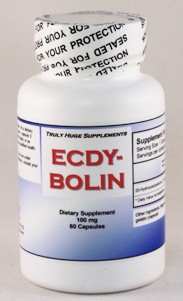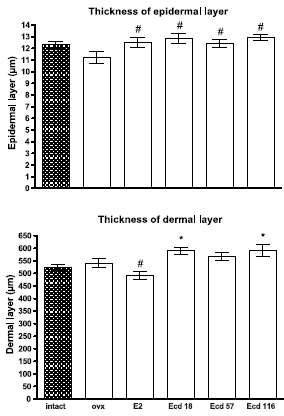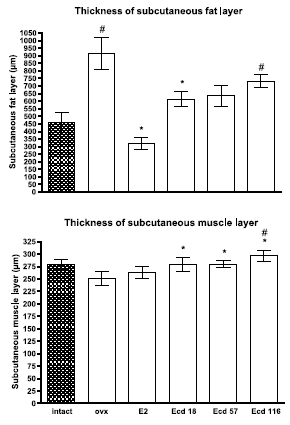
Click Here for Free Bodybuilding and Fitness Magazine Subscription
Ecdysterone Health Benefits

Click Here For The Best Ecdysterone Supplement
Ecdysterone for Younger Skin and More Muscle Mass
Could be an idea for a new supplement: not a sports supplement but a skinceutical with a high concentration of 20-hydroxy-ecdysterone. According to an animal study done at the University Medical Center Goettingen, such a supplement not only improves body composition but also skin quality.

|
20-Hydroxy-Ecdysterone is an ecdysteroid. Plants related to spinach make ecdysteroid compounds to protect themselves against caterpillars. When they eat 20-hydroxy-ecdysterone, caterpillars change into butterflies - and butterflies don't eat spinach. A standard serving of spinach contains more than 100 mg ecdysteroids.
Ecdysteroids have an anabolic effect in humans and animals, which is why the shelves are lined with ecdysteroid supplements for athletes looking to boost their muscle growth.
Older Russian animal studies even liken the anabolic effects of ecdysteroids to those of dianabol. This is probably an exaggeration, but recent German animal studies have shown that small quantities of 20-hydroxy-ecdysterone have an anabolic effect on muscles, bone and cartilage. According to American research, 20-hydroxy-ecdysterone makes mice stronger and slimmer.
The German researchers were curious to know what the effect of 20-hydroxy-ecdysterone is on the skin. Women who are in the menopause produce less estradiol, so their skin ages faster. Hormone therapy helps, but estrogenic compounds are carcinogenic. 20-Hydroxy-Ecdysterone is not estrogenic. You do the math.
After the researchers had mixed 18, 57, or 116 mg 20-hydroxy-ecdysterone for a period of 12 weeks in the food of female rats whose ovaries had been removed, they noticed that the animals' skin had become plumper. Their muscle mass had increased and fat mass decreased.


The conclusion seems obvious. According to the researchers, ecdysteroids are an alternative to hormone treatment for post-menopausal women.
Source:
Menopause 2010 doi: 10.1097/gme.0b013e3181f322e3.

